- The change in channels: making marketing campaigns possible
- WhatsApp: marketing templates
- Facebook Messenger: recurring notifications
- Instagram: functionality in the pipeline
- Defining the P: push and pull in traditional marketing
- Push communication: reaching out proactively
- Pull communication: conversation as a marketing tool
- The trouble with tradition: channels running out of steam
- Email: yesterday’s option?
- Social media: Organic reach is in decline
- Paid PPC: Rising CPM’s and CPC’s
- Insights in ads: the end of the 3rd party cookies
- Conversational marketing: today’s solution, for today’s channels
- Benefit #1: Excellent open rates (no spam inbox) …
- Benefit #2: … and high clickthrough rates too
- Benefit #3: Competition less intense
- Benefit #4: One-to-one communication
- According to Davey
- Some use cases for conversational marketing
- Use case #1: A new kind of newsletter
- Use case #2: Order updates with a side of cross-sell
- Use case #3: Time-limited offers and invitations
- Use case #4: Turning service interactions in sales
- Best practices in a conversational marketing world
- Start the conversation with your customers
Yes it is – but recent innovations by the market leader in messaging (Meta) are making conversational marketing a much bigger deal. And it’s one CM.com is perfectly placed to exploit for our customers’ gain. So our definition is a little different to the conversational marketing mainstream.
The mainstream view is that conversational marketing is a “pull” channel. (Think of a customer typing into a chat window, or asking a question of a support tech, or contacting Sales on their WhatsApp.) Someone in the audience makes the connection, and it’s up to the business to turn that hot prospect into a loyal customer by answering their issue.
At CM.com we think that’s missing the opportunity. Meta – owner of Facebook, WhatsApp, and Instagram – is launching outbound messaging capabilities for marketers, letting you contact customers (those who’ve opted in, of course) with fresh content like newsletters and offers, distributed on the same channel. So while conversational marketing is still “pull”, it’s now a “push” channel too.
It’s not simply a new set of features – it’s a whole new way of thinking about how we talk with customers. Methods that close the gap between the one-way marketing campaign and the two-way customer conversation … and retain the best bits of both.
Let’s look at the new ideas that are turning conversational marketing into a completely new kind of channel … and how CM.com can bring those benefits to your door.
The change in channels: making marketing campaigns possible
What enables this new conversational marketing model? A technical development some of the world’s largest messaging apps have recently put in play. It allows marketers to contact customers directly – as you would with email – but using messaging apps to do it, the same ones they use to talk to other contacts.
This change is the missing link that makes conversational marketing a rich source of ideas. Let’s look at Meta’s new features app-by-app.
WhatsApp: marketing templates
The Meta-owned WhatsApp platform now also allows marketing templates. Once properly opted-in, businesses can send WhatsApp users marketing messages and conversation starters. And given WhatsApp’s huge user base – 2 billion people, even more than China’s giant WeChat platform – the channel has massive potential for budding conversational marketers.
What’s more, WhatsApp is already accepted as a way to converse with businesses. The WhatsApp for Business app has over 50m users in over 5.25m organisations; over 175m people sent messages to business accounts daily. There’s a lot of customers in that audience.
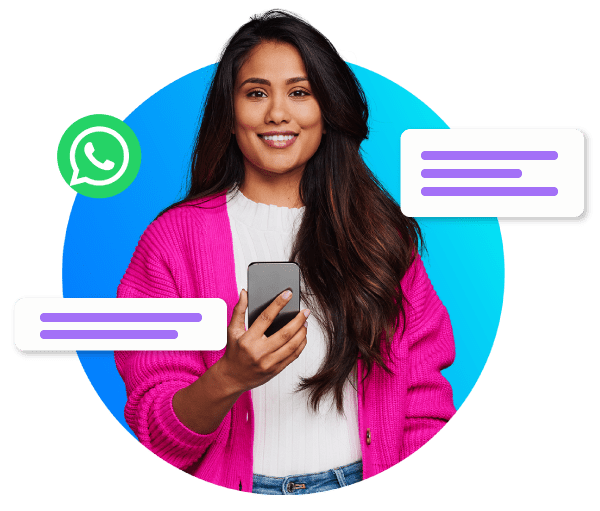
Facebook Messenger: recurring notifications
The same applies to Meta’s other big messaging property Facebook Messenger. It’s now possible to sendrecurring notifications. This means marketers can send opted-in users a variety of different messages directly in Messenger, for example product announcements, order updates, and offers. And repeat those messages every few days, in accordance with strict standards.
The change may seem small, but the potential for marketers is huge. Because if a user opts-in via Messenger, the marketer can start sending marketing campaigns. Personalised product introductions. An easy route to aftersales support. And a new way to invite the customer into brand experiences. With 1.3bn people using Facebook Messenger – it’s the world’s fourth-busiest platform – your customers are probably there already.
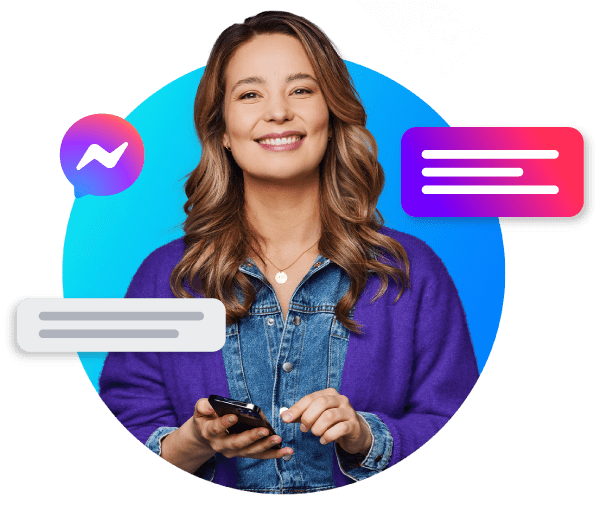
Instagram: functionality in the pipeline
While it’s not official yet, it’s believed fashion-to-food-photography app Instagram – another Meta company – will soon follow suit with recurring notifications, harmonising the capabilities of Meta’s big three messaging properties. And the potential here goes even further.
Being such a visually-led app creates greater opportunities for rich and deep brand experiences: video instructionals, personalised welcomes, even custom content generated by AI. With over 25m business accounts on the platform and users following accounts the same way as Twitter, customers already treat Instagram as a way to start and continue conversations with their favourite brands and influencers on a channel they feel comfortable with.
All this means conversational marketing is moving from a “pull” channel to one that thrives on both pull and push. Here’s why this is a big deal.
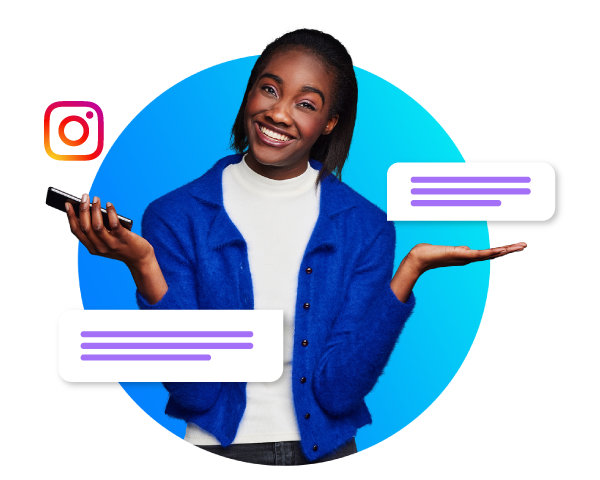
Defining the P: push and pull in traditional marketing
To see why this combination of push and pull matters, let’s look at each channel in isolation – the way traditional messaging divides them.
Push communication: reaching out proactively
With push communication, messages are initiated by a company – and all too often it’s a one-way street: out goes your ad or text, and customers see it but don’t answer. BOGOF (Buy One, Get One Free) offers, sales promotions, and time-limited deals – usually sent as newsletters or similar – are all push, push, push.
Of course, not all communications require an answer – which is why the push model is commonly used for broadcast-style content blasts: sending out articles, news, updates, deals, and straight advertising.
Pull communication: conversation as a marketing tool
By contrast, the pull approach focuses on having a conversation with your customer in order to increase customer loyalty, keep yourself top-of-mind as a brand, and learn more about each customer and their expectations so you can serve them better. Bear in mind it’s the user who initiates these conversations – not you. The starting point can be clicking a link, talking to a chatbot, or scanning a QR code – anything that signals a customer’s desire to get a response from you.
This may sound harder than push, because those user actions are happening at different times and with different response rates – but ultimately waiting for customers to act is a good thing, since it increases interaction depth later on. If they contacted you first, they had a reason to do so. Trust and comfort are already there.
The trouble with tradition: channels running out of steam
Both push and pull work. But here’s the twist: on many existing channels, reaching the customers who count is getting harder and harder. Let’s look at why.
Email: yesterday’s option?
While email providers have largely solved the spam problem, email as a channel is becoming less and less effective. Partly because everyone’s using email marketing – but also because people are simply sending fewer emails. Young people particularly prefer other channels for communicating, even in the workplace. While over 300bn emails are sent each day, many aren’t threaded conversations between people: they’re CRM content, order updates, and social media alerts. So using it to engage customers today has problems. Engagement rates are low: in 2023, only around 21% of emails even get opened; a click, signifying minimal engagement, happens to be just 2.62%. And bounces and unsubscribes are common, around a percentage point every time you send a campaign.
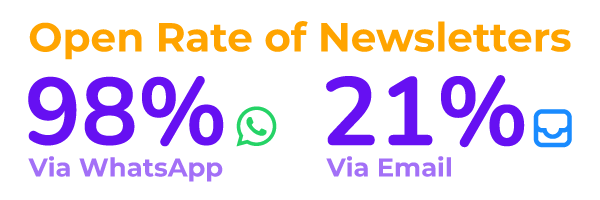
Social media: Organic reach is in decline
You are probably already active on social media with its promise of reaching millions of consumers with every post. But audiences are hard to build, and when you have a big following reaching them via organic posts is even harder. Currently the average organic reach rate on Facebook is 8.60% and on Instagram 13.51%, with the expectation that this will only diminish in the future. After all, social media businesses make their money from businesses, so giving less organic reach indirectly ensures that businesses have to advertise.
Paid PPC: Rising CPM’s and CPC’s
Whether you’re in the market selling a gallon of milk, shoes or electronics, there’s one thing you can count on: It’s going to cost you more than it used to, with market intelligence allowing competitors all over the world to target the same customer. Since internet advertising follows a bidding model, this raises costs in proportion to the attractiveness of the prospect – some advertisers pay hundreds of dollars for a single click. While click through rates from basic Google Ads are only 4-6%, and even lower for display (image-driven) variants.
Insights in ads: the end of the 3rd party cookies
Added to this is a recent change in knowing who your customer is: the death of the client-side cookie. With the data for identifying site visitors moving server-side, and advertising networks (like Google and Amazon) cagey about sharing its data with advertisers, it’s becoming harder to sieve out insights that would make your marketing better.
Conversational marketing: today’s solution, for today’s channels
The new features in Meta’s properties address these issues. And that’s what excites us about conversational marketing with them – because you’re not one piece of content in a crowd. You’ve got their attention, on the channel they already know, and are ready to respond about specific issues and subjects they've raised with you. Let’s list some benefits.
Benefit #1: Excellent open rates (no spam inbox) …
Unlike email these days, WhatsApp and similar channels enjoy high open rates – in some cases nearly 100%. The beauty of it is that messages never go to spam because there's no such thing for these channels yet. We really see it as the job of marketers not to pollute these channels as has happened with email. Messages are also opened in a timely manner, since mobile phones (the most common device used) are valued personal items and are rarely far from their owner’s hand.
Benefit #2: … and high clickthrough rates too
Every marketer knows the success metric is click through’s not opens – and conversational marketing delivers here, too, with CTRs of 45%-60% common. Again, it’s all because of relevancy. Any consumer you send a recurring message to on WhatsApp or Facebook Messenger has already opted in and already reached out to you somehow. They’re engaged and ready.
Benefit #3: Competition less intense
As of today, conversational marketing over these channels isn’t a standard part of every marketer’s toolbox; you’re not trying to make your voice heard above everybody else’s. In fact, shouting is the wrong strategy. You’re talking to customers who want to hear from you – letting you engage and nurture your customers on an individual basis, scaling up over time.
Benefit #4: One-to-one communication
One more benefit. On these channels, your customers are already interested, already invested, and already communicating one-to-one. It’s the perfect start to a positive conversation over time – and the ideal jumping-off point for sending newsletters, updates, and other useful content on the same channels.
According to Davey
That’s why nobody’s more enthusiastic about conversational marketing than CM.com’s Davey van Ginneke, product owner of our Mobile Marketing Cloud.
“It’s amazing how these newly added features can enable countless new opportunities for our customers. We’re seeing huge potential for retailers, eCommerce sites, and consumer brands who may have a successful social media presence and now want to leverage it.”
– Davey van Ginneke, CM.com
Some use cases for conversational marketing
Of course, no approach works for all marketers or all customers. But there’s a specific set of use cases that (in our experience) conversational marketing with WhatsApp and similar seems ideally suited for. Let’s look at a few.
Use case #1: A new kind of newsletter
Most newsletters are still sent by email. But today’s smartphone screens allow all the same splashy colors and designs that attract the eye – with many people using them to surf the web in preference to that big clunky desktop at home. So why not send your next newsletter over WhatsApp, as part of an ongoing conversation?
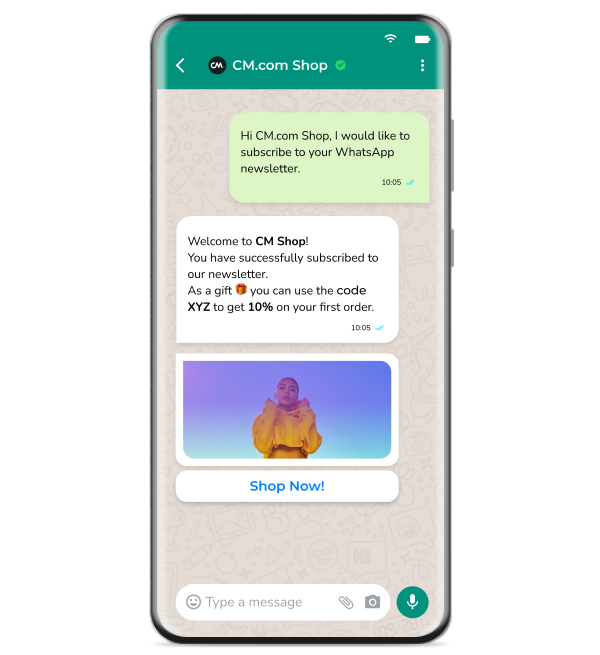
Use case #2: Order updates with a side of cross-sell
Mobile channels are ideal for sending updates on a customer order: they’re timely and personal. For the same reason, another use case is to spice up each order update with additional content – perhaps a discount coupon, special offer, or product that compliments the one they’ve ordered. You’re delivering extra value – and because it’s in the context of a conversation, it can be persuasive without being intrusive.
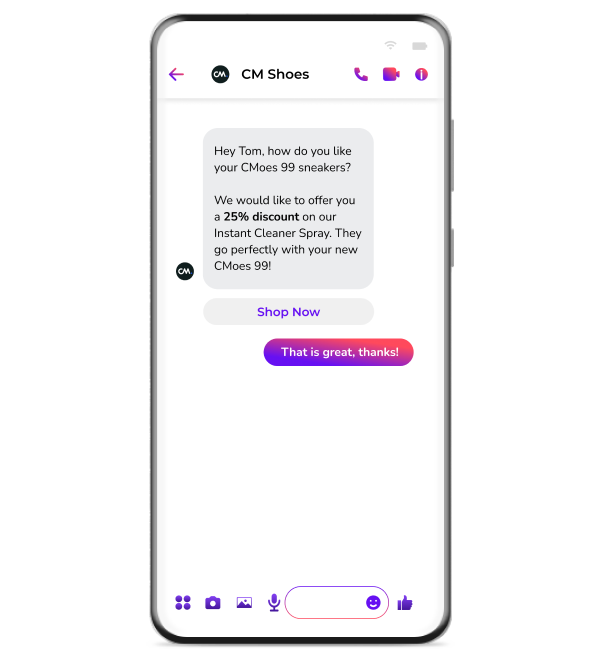
Use case #3: Time-limited offers and invitations
Limited-time-only offers are a great way to boost the quarter’s sales figures – and mobile messaging apps are the perfect channel for them, since consumers tend to respond to the buzz of a new message coming in almost immediately. If you make it easy for them to take up the offer – with a direct personalised link – you’re removing the friction that surrounds a normal shopping transaction, with all the potential for uplift that implies.
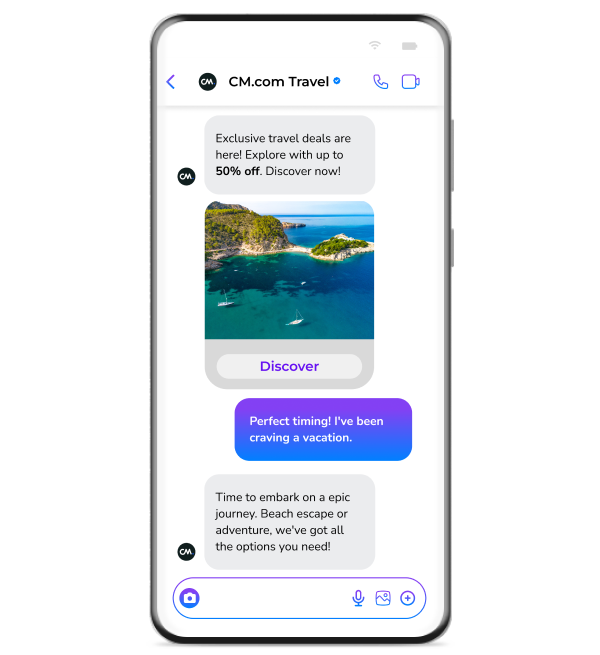
Use case #4: Turning service interactions in sales
Often a customer’s conversation starter is with a chatbot at your service desk – and research shows how grateful people are to have an issue resolved quickly and efficiently. Why not follow up that successful outcome with a special deal on another product, right there and then? You’re making use of the good feeling you’ve created – and turning it into profit.
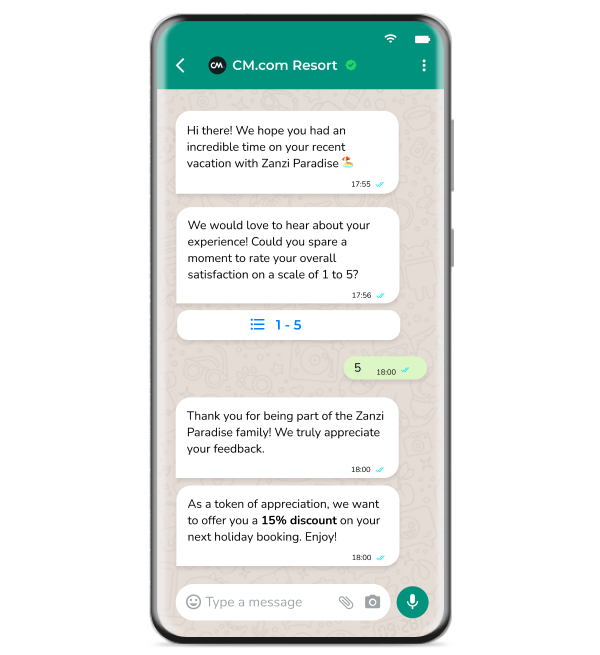
Best practices in a conversational marketing world
Of course, over-communication from marketers in this model is as risky as in any other channel – and the consequences range from scolds to bans. All the platforms are developing usage guidelines, but here are some best practices likely to keep you on the right side of all of them.
Let the customer make the first move. A key best practice is to let the customer start the conversation, by reaching out on messaging channels you publish. Once you have a reason to talk, send that opt-in request with your response.
Act within 24 hours. Nobody likes waiting for a reply. So always aim to act within a day, and preferably much sooner.
No repeated messages – your customer can see your conversation in context by scrolling, so there’s no point sending the same message every week.
Vary your communications. Don’t send an endless stream of discount offers; turn each interaction into a genuine conversation, listening to what the customer says before answering.
Use scolds as teachable moments. It’s inevitable you’ll break best practices sometimes, when a user blocks you, reports you, or doesn’t want to talk anymore. Always treat these as learning opportunities that inform your next marketing moves, not as barriers to getting around.
And don’t talk all the time! As with a spoken conversation, don’t try to dominate. It’s a two-way discussion, so adopt a give-and-take approach.
We think you’ll see that with this new technological model there are many use cases for conversational marketing.
Start the conversation with your customers
CM.com has been working with two-way messaging platforms like WhatsApp and Facebook Messenger for years – giving us an intimate understanding of how they’re used, how customers behave, and what the possibilities are for conversational marketing. And we’d love to discuss those possibilities with you.
